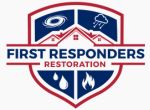Storm Damage Restoration: Preparing Your Business for Severe Storms in St. Louis
The Storm is Coming—Is Your Business Ready to Ride It Out?
Dealing with storm damage restoration isn’t exactly a fun topic, but if you own a business in Missouri, it’s something you should definitely be ready for. The weather here can be unpredictable. One moment it’s bright and sunny, and the next, the sky turns ominous, sirens go off, and you’re left wondering what to do next. If you’re in St. Louis or any nearby areas, you know just how disruptive and hazardous these spring and summer storms can be.
Tornadoes, hailstorms, flash floods, and power outages are more than just news headlines here. They’re part of our seasonal reality. And while we can’t stop Mother Nature, we can definitely prepare for her worst. That’s where a proactive game plan and a little help from First Responders Restoration comes into play.
Whether you run a salon in Arnold, manage a clinic in Jefferson County, or operate a retail store in downtown STL, this guide will help you fortify your business, keep your team safe, and recover quicker than your competition.
Why Business Storm Preparation is a Must in Missouri
From 1991 to 2020, Missouri averaged around 46 tornadoes annually, and the spring season, especially April through June, is prime time for all types of severe weather. That’s bad news for business owners with outdated buildings, unprotected data, or no backup plan.
But here’s the upside: businesses that prepare don’t just survive. They recover faster, gain customer trust, and save money in the long run. First Responders Restoration has helped countless local businesses with storm damage restoration, water damage clean up, and recovery services after disasters. This guide will help you do it before the damage happens.
For national trends in disaster preparation, check resources like FEMA’s Ready Business Program and NOAA’s Storm Prediction Center.
Be Ready Now, Thank Yourself Later
You can’t predict the next big storm, but you can prepare for it. Business owners who take even some of these steps will protect their property, keep their employees safe, and recover faster than those who don’t.
At First Responders Restoration, we specialize in helping businesses across Missouri recover from flood, fire, storm, and more. Our restoration specialists are here when you need storm damage repair services, water damage restoration St. Louis area support, or roof repair assistance.
So grab this checklist, walk through your building, talk to your insurance agent, and give us a call if you want a pre-season inspection. When the storm comes (and it will), you’ll be ready.








Leave A Comment